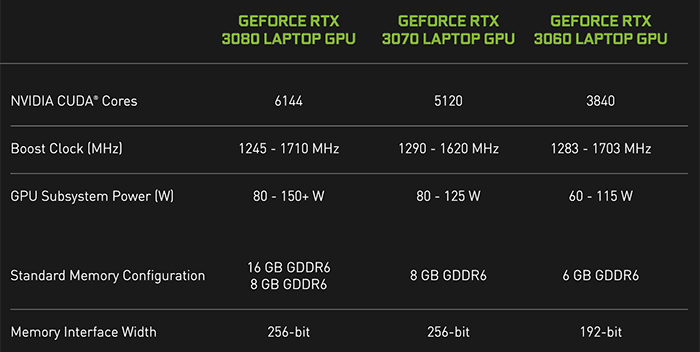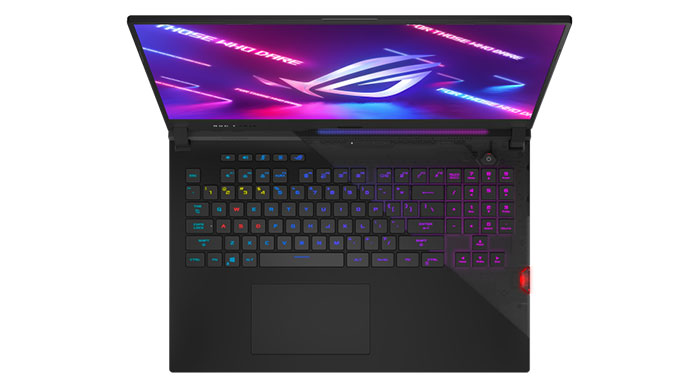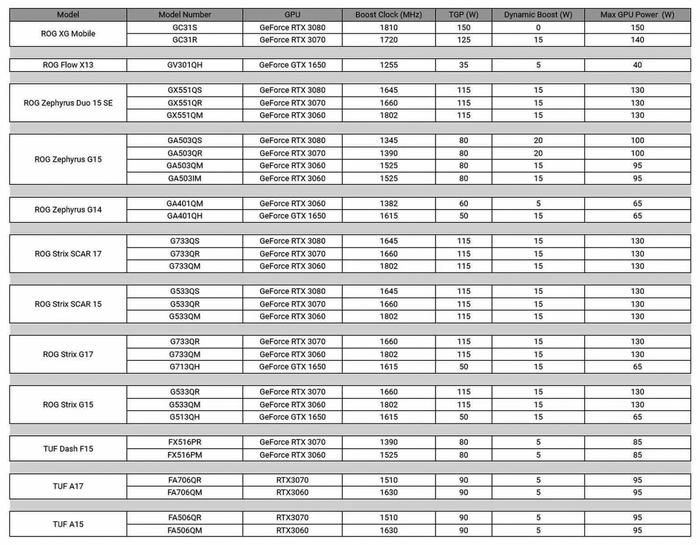Nvidia announced its GeForce RTX 30 series laptop GPUs at CES 2021. I added a summary of the new offerings in a table inserted at the end of my Asus laptop coverage from the event. You can see that table below, charting the specs of the RTX 3060, 3070, and 3080 mobile GPUs. At the time Nvidia said that these GPUs target 1080p ultra, 1440p ultra, and 100+ FPS at 1440p Ultra, respectively. However, if you've read reports and reviews of the latest Nvdia partner lapotps using these new GPUs the choice isn't quite so clear cut.

Looking at the table above there is a wide range of 'GPU Subsystem Power' levels for laptop makers to implement for each Mobile GPU. In general bigger, thicker gaming laptops with beefier or more advanced cooling solutions will be able to support the higher watt options for any particular GPU and provide better sustained performance. It is thus possible for a new RTX 3060 laptop to perform as well as an RTX 3070 one, or an RTX 3070 better than an RTX 3080 laptop, depending upon the 'GPU Subsystem Power' chosen by the laptop maker.

Nvidia used to use Max-Q and Max-P to trumpet the difference between its mobile GPU power profiles but that wasn't ever very clear so I am happy to report that it has now moved from encouraging that OEM partners list full mobile GPU specs in their product pages to requiring it. The Verge reports that it has had communications with Nvidia about this. Going forward "companies will have to disclose specific clock speed stats and total graphics power on online product pages," says the consumer tech site.
As mentioned above, Max-Q is not part of Nvidia's 2021 Mobile GPU nomenclature, and Nvidia says the reason for this is that all mobile GPUs will be using Max-Q technology adding features such as Whisper Mode 2, Dynamic Boost 2, and Advanced Optimus.
Laptop makers might take a bit of time to update their product pages, which is understandable. Asus is one of the first to play nicely, it seems, as it has provided the following reference table with GPU specs made very clear. However, I looked at some individual product pages at ROG.Asus.com and this data wasn't shown in the specs tab, at the time of writing.
HEXUS has one CES 2021 announced laptop review published so far this year, the unusual Asus ROG Flow X13, which can be partnered with a custom external RTX 30 GPU expansion box, but we have some RTX 30 laptop reviews on the way.














